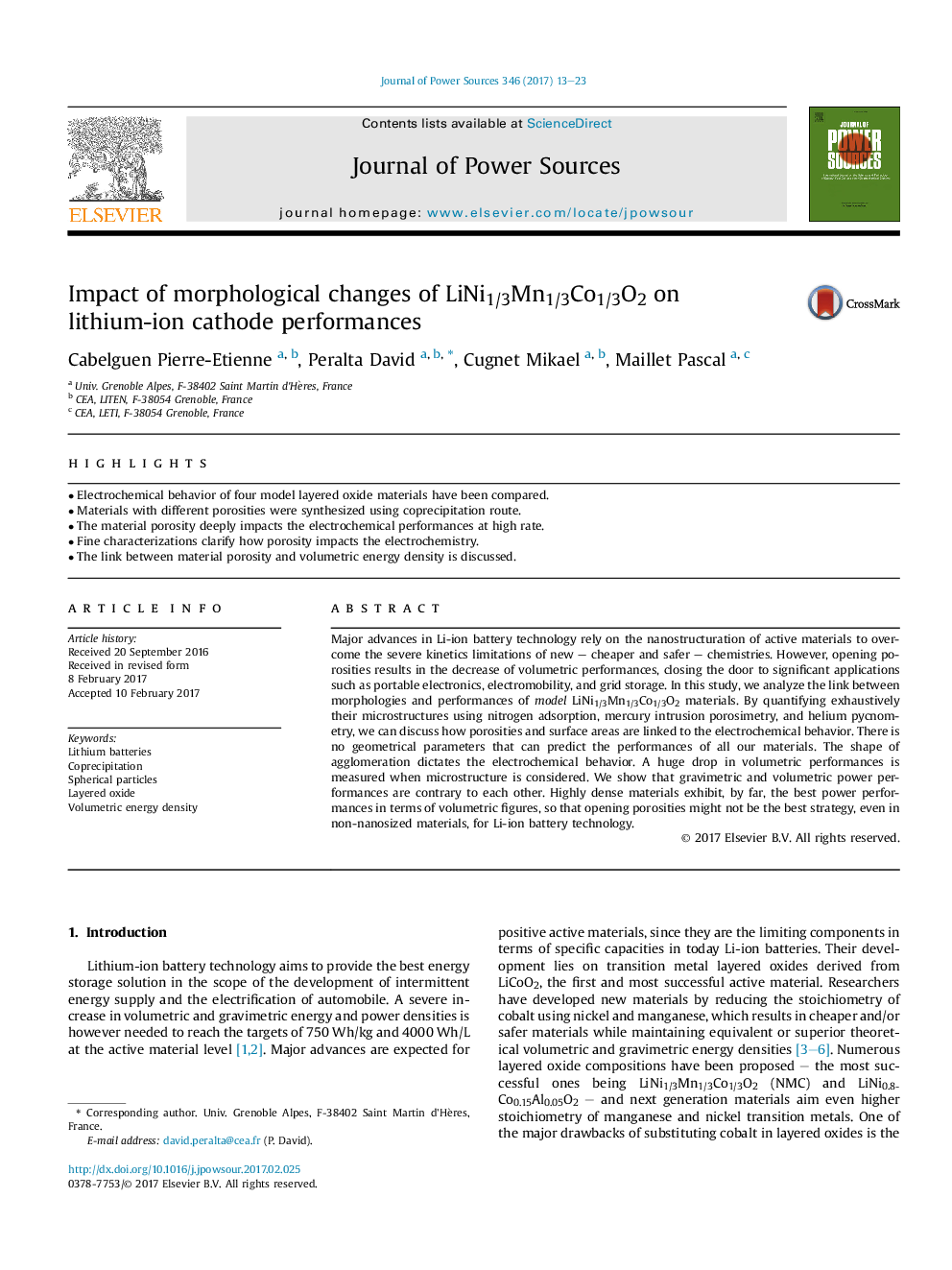| Article ID | Journal | Published Year | Pages | File Type |
|---|---|---|---|---|
| 5149719 | Journal of Power Sources | 2017 | 11 Pages |
Abstract
Major advances in Li-ion battery technology rely on the nanostructuration of active materials to overcome the severe kinetics limitations of new - cheaper and safer - chemistries. However, opening porosities results in the decrease of volumetric performances, closing the door to significant applications such as portable electronics, electromobility, and grid storage. In this study, we analyze the link between morphologies and performances of model LiNi1/3Mn1/3Co1/3O2 materials. By quantifying exhaustively their microstructures using nitrogen adsorption, mercury intrusion porosimetry, and helium pycnometry, we can discuss how porosities and surface areas are linked to the electrochemical behavior. There is no geometrical parameters that can predict the performances of all our materials. The shape of agglomeration dictates the electrochemical behavior. A huge drop in volumetric performances is measured when microstructure is considered. We show that gravimetric and volumetric power performances are contrary to each other. Highly dense materials exhibit, by far, the best power performances in terms of volumetric figures, so that opening porosities might not be the best strategy, even in non-nanosized materials, for Li-ion battery technology.
Related Topics
Physical Sciences and Engineering
Chemistry
Electrochemistry
Authors
Pierre-Etienne Cabelguen, David Peralta, Mikael Cugnet, Pascal Maillet,
